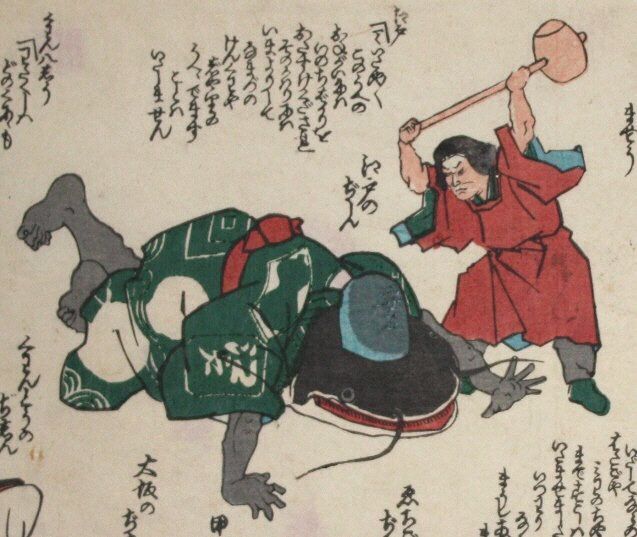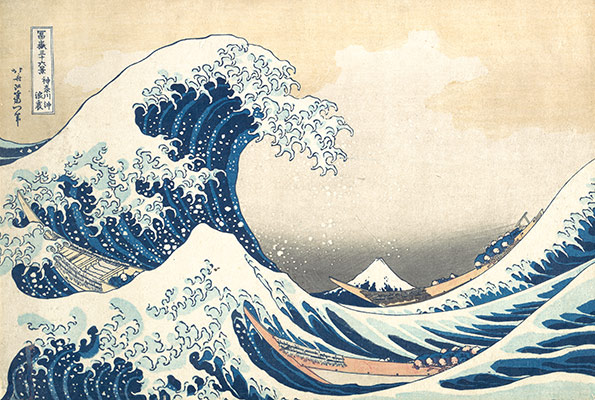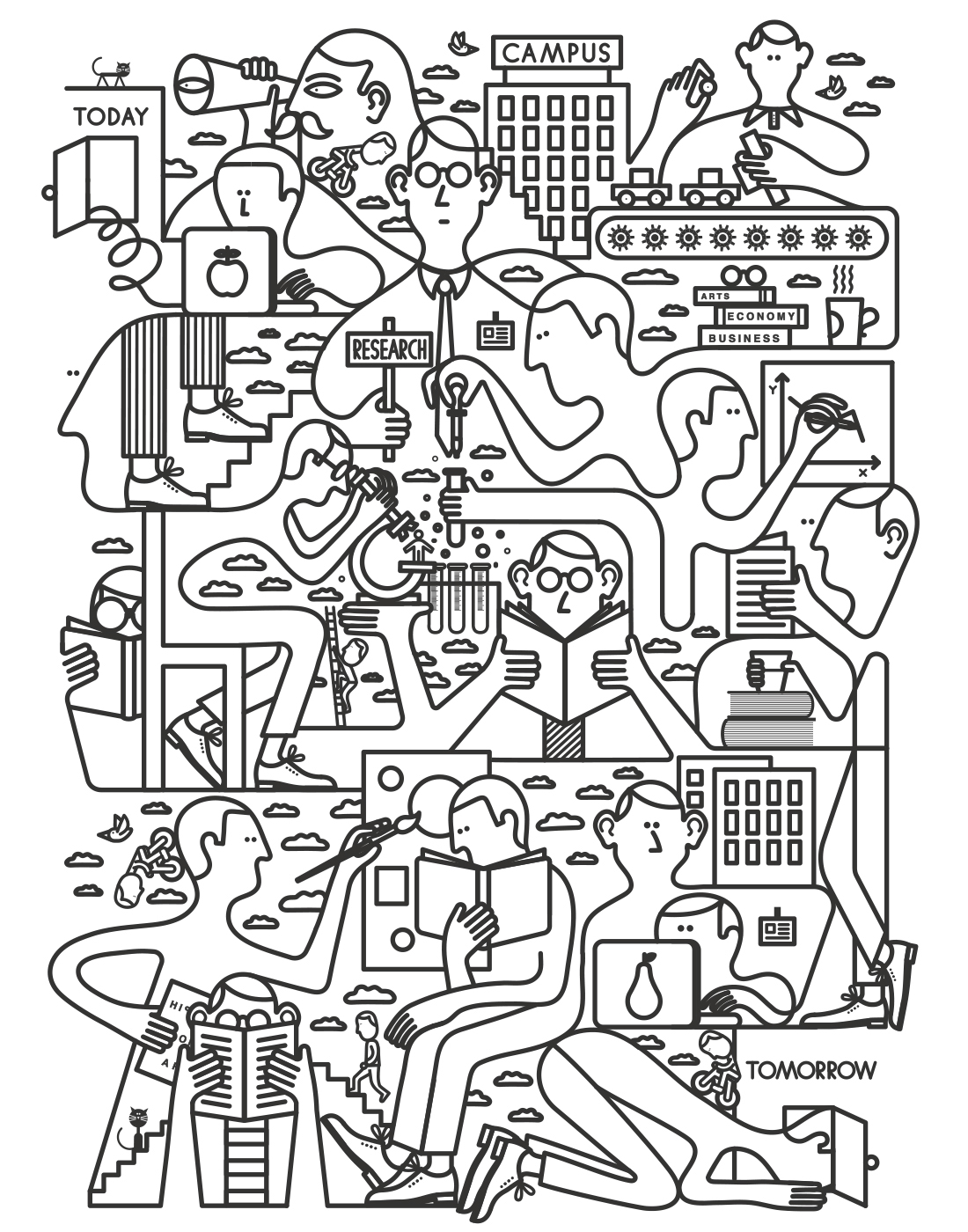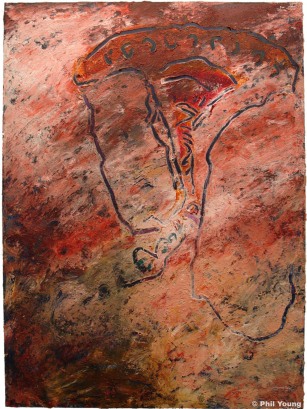http://mentalfloss.com/article/59737/10-horrifying-demons-and-spirits-japanese-folklore
1. Kiyohime
Kiyohime was a young woman scorned by her lover, a monk named Anchin, who grew cold and lost interest in her. Realizing he had left her, Kiyohime followed him to a river and transformed into a serpent while swimming after his boat. Terrified by her monstrous form, Anchin sought refuge in a temple, where monks hid him beneath a bell. Not to be evaded, Kiyohime found him by his scent, coiled around the bell, and banged loudly on it with her tail. She then breathed fire onto the bell, melting it and killing Anchin.
2. Yuki-onna (Snow woman)
There are many variations of this popular Japanese tale. Yuki-onna is usually described as having white skin, a white kimono, and long black hair. She appears in snowfall and glides without feet over the snow like a ghost. She feeds on human essence, and her killing method of choice is to blow on her victims to freeze them to death and then suck out their souls through their mouths.
3. Shuten Dōji
Shuten Dōji is described as more than 50 feet tall with a red body, five horns, and 15 eyes. There’s no need to fear this demon, though. In a legend from the medieval period, warriors Raikō and Hōshō infiltrated Shuten Dōji’s lair disguised as yamabushi (mountain priests) to free some kidnapped women. The oni greeted them with a banquet of human flesh and blood, and the disguised warriors offered Shuten Dōji drugged sake. After the demon passed out, the warriors cut off his head, killed the other oni, and freed the prisoners.
4. Yamauba (Mountain ogress)
Also originating in the medieval period, yamauba are generally considered to be old women who were marginalized by society and forced to live in the mountains—who also have a penchant for eating human flesh. Among many tales, there is one of a yamauba who offers shelter to a young woman about to give birth while secretly planning to eat her baby, and another of a yamauba who goes to village homes to eat children while their mothers are away. But they're not picky; they’ll eat anyone who passes by. Yamabuas also have mouths under their hair. Delightful!
5. Uji no hashihime (Woman at Uji Bridge)
In another tale of a woman scorned, Uji no hashihime prayed to a deity to turn her into an oni so she could kill her husband, the woman he fell in love with, and all of their relatives. To accomplish this, she bathed in the Uji River for 21 days, divided her hair into five horns, painted her body red with vermilion, and went on a legendary killing spree. Besides her intended victims, anyone who saw her instantly died of fear.
6. Tengu
Tengu are impish mountain goblins that play tricks on people, featured in countless folktales and considered purely evil until about the 14th century. They were originally depicted as birdlike, with wings and beaks, though now the beak is often replaced with a comically large nose. They are known to lead people away from Buddhism, tie priests to tall trees and towers, start fires in temples, and kidnap children. Many legends say the tengu were hypocritical priests who must now live the rest of their lives as mountain goblins as punishment. Locals made offerings to the tengu to avoid their mischief, and there are still festivals in Japan dedicated to them today.
7. Oiwa
A revenge story made popular by the famous kabuki drama Yotsuya kaidan, Oiwa was married to a rōnin (masterless samurai) named Iemon; he wanted to marry a rich local’s daughter who had fallen in love with him, and, in order to end their marriage, Oiwa was sent a poisoned medicine. Though the poison failed to kill her, she became horribly disfigured, causing her hair to fall out and her left eye to droop. Upon learning of her disfigurement and betrayal, she accidentally killed herself on a sword. Her ghostly, deformed face appeared everywhere to haunt Iemon. It even appeared in place of his new bride’s face, which caused Iemon to accidentally behead her. Oiwa’s spirit followed him relentlessly to the point where he welcomed death.
8. Demon at Agi Bridge
This story begins as so many horror stories do: With an overly-confident man who boasted to his friends that he didn’t fear to cross Agi Bridge or the demon rumored to reside there. As oni are known for their ability to shape-shift, the demon at Agi Bridge appeared to the man as an abandoned woman. As soon as she caught the young man’s eye, she transformed back into a 9 foot green-skinned monster and chased after him. Unable to catch the man, the demon later changed into the form of the man’s brother and knocked on his door late at night. The demon was let into the house and, after a struggle, bit off the man’s head, held it up and danced with it before his family, and then vanished.
9. Kuchisake-onna (Slit-mouthed woman)
In an urban legend from 1979 that swept through Japan, Kuchisake-onna wears a surgical mask and asks children if they think she is beautiful. If they say yes, she takes off the mask to reveal her mouth slit from ear to ear and asks the question again. The only way to escape is to give a noncommittal answer, such as "you look OK." Barring that, you can distract her with certain Japanese candies. But if the children say yes again, she will cut their mouths to make them look like her.
10. Aka Manto (Red Cloak)
With a demon for just about everything, why shouldn’t the Japanese have a few for their bathrooms? Aka Manto, one of the more popular demons, hides in women’s bathrooms. In one version of the story, Aka Manto asks women if they would like a red cloak or a blue cloak. If the woman answers “red,” Aka Manto tears the flesh from her back to make it appear she is wearing a red cloak. If she answers “blue,” then he strangles her to death. Unfortunately, if you encounter Aka Manto, there may be no escaping: Some versions of the story say if you don’t answer or if you pick a different color, he will immediately drag you to hell.





























